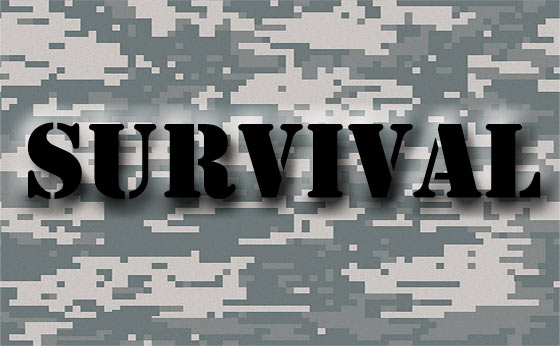SURVIVAL – How To Survive

To survive under difficult or threatening circumstances requires good instincts and the right knowledge and actions working together for success.
Here are some survival tips to consider:
The following tips come from the US Army Survival Manual: FM 21-76 (October 1970)
Size Up the Situation
Size Up the Situation, Surroundings, your Physical Condition, and your Equipment.
Use All Your Senses, Undue Haste Makes Waste
You may make a wrong move when you react quickly without thinking or planning.
Remember Where You Are
Always try to determine how your location relates to ‘the enemy’, ‘friendlies’, local water sources, and areas that will provide cover.
Vanquish Fear and Panic
The greatest enemies in a survival situation are fear and panic.
Improvise
No matter how complete a survival kit you have with you, it will run out or wear out after a while. Your imagination must take over when your kit wears out.
Value Living
Stubbornness, a refusal to give in to problems and obstacles that face you, will give you the mental and physical strength to endure.
Act Like the Natives
The natives and animals of a region have adapted to their environment. To get a feel of the area, watch how the people go about their daily routine. Learn how to adapt to their (humans and animals) environment and increase your chances of survival.
Live by Your Wits, but for now…Learn Basic Skills
Survival training reduces fear of the unknown and gives you self-confidence. It teaches you to live by your wits. Learn these basic skills now–not when you are headed for or are in the ‘battle’.
Pattern For Survival
Develop a survival pattern that lets you beat the enemies of survival. This survival pattern must include food, water, shelter, fire, first aid, and signals – placed in order of importance.
For example, in a cold environment, you would need a fire to get warm, a shelter to protect you from the (cold, wind, and rain or snow), a means to get food, a means to signal for help (if you’re looking for it), and first aid to maintain health.
Change your survival pattern to meet your immediate physical needs as the environment changes around you.
Adapt.
——————————————–
More thoughts on survival…
Practice. Many of the essential survival skills must be learned and practice is a better way to learn them then necessity. Pratice will also expose your errors and misconceptions in a way that gives you time and opportunity to correct them.
Learn the 10 C’s of survival.
The 10 C’s Of Survivability include Cutting, Combustion, Cover, Container, Cordage.
The general subject of survival is immense, and dependent upon conditions, circumstances, and so many other things. It will range from very basic rudimentary skills to those more advanced. There’s wilderness survival, urban survival, and so much more. You might focus on those that better match your probabilities and likelihoods. But don’t forget the basics…
Remember, “Survival training reduces fear of the unknown and gives you self-confidence.”
